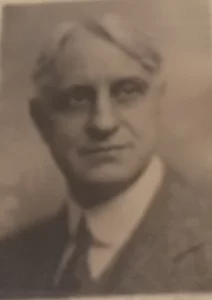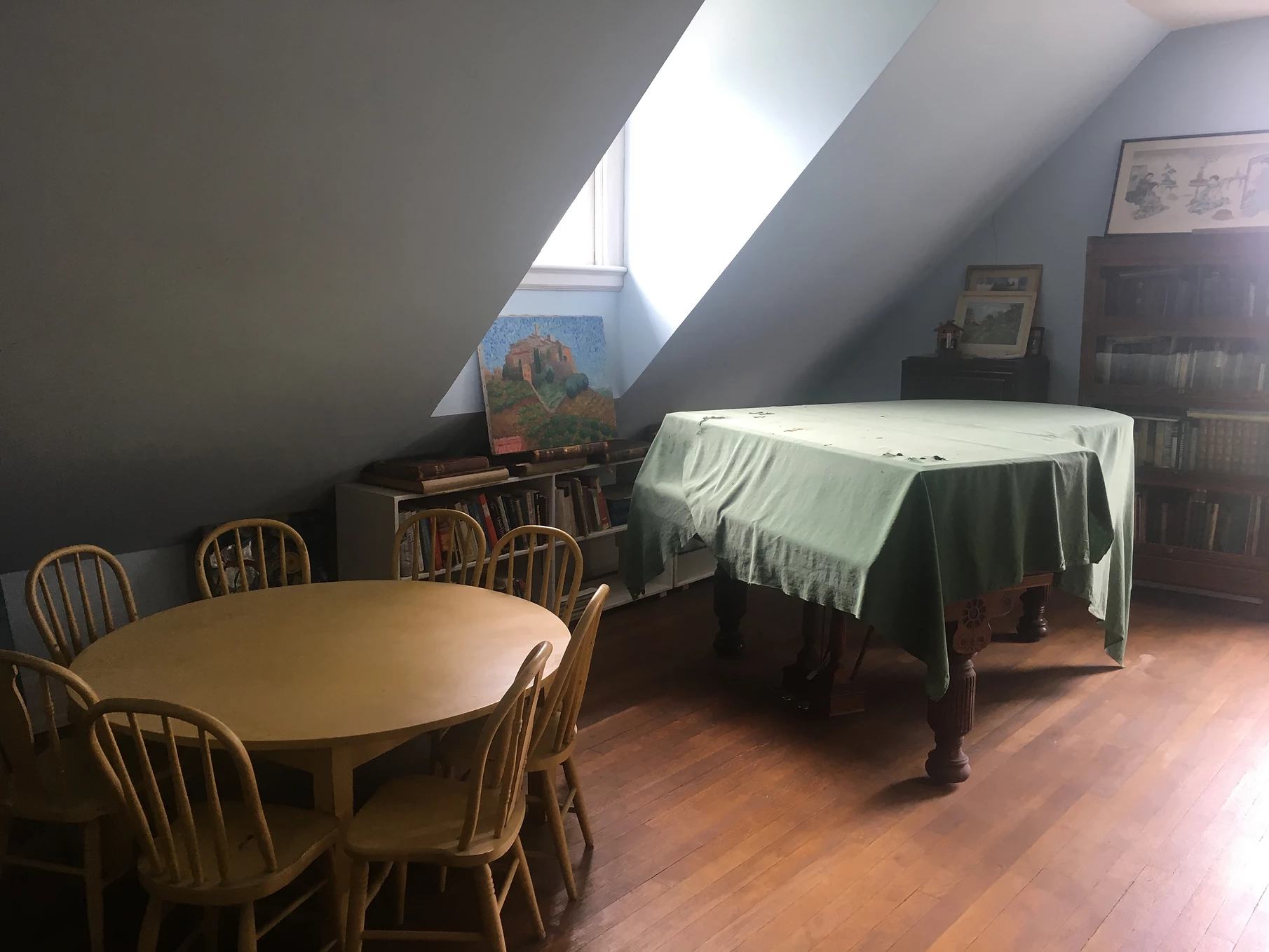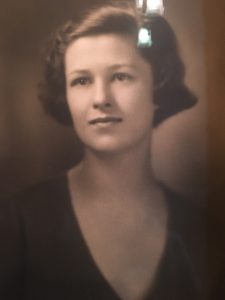History

The Ringland Smeltzer House qualifies for the National Register of Historic Places under Criteria B and C. Criterion B requires that a property be associated with the lives of a person or persons significant in the past whose activities are demonstrably important within a local, state and national context. George Ringland, who built the house, and his family clearly meet the requirements on both the local and national level. The house is important locally because the Ringland/Smeltzer family played a significant role both economically and culturally in the history and development of both Fort Dodge and North Central Iowa from the very first years of settlement in the 1850s until the end of the twentieth century and the death of Ann Smeltzer, the last member of the family. The house epitomizes the industry and success of its owners and the Fort Dodge community. It is important nationally because George Ringland was an entrepreneur whose patent for the improvement of plaster contributed to the growth of the gypsum industry and changed the nature of building construction and because he was one of the founders of one of the nation’s leading corporations, the U.S. Gypsum Company.
 Charles Smeltzer was orphaned at the age of six and he was returned to the East to be raised by relatives. When he turned 14 he came back to Fort Dodge to live with George Pearson, a local relative, a land investor, and the future father-in-law of Senator Jonathon Dolliver. After graduating from Fort Dodge High School Smeltzer went on to attend the University of Iowa and then the University of Michigan. Upon graduation from the University of Michigan he returned to Fort Dodge to make a career in banking, serving as president and member of the board of directors in a number of banks in Iowa and Minnesota, and in land management. He and his wife lived most of their married life in her parents home.
Charles Smeltzer was orphaned at the age of six and he was returned to the East to be raised by relatives. When he turned 14 he came back to Fort Dodge to live with George Pearson, a local relative, a land investor, and the future father-in-law of Senator Jonathon Dolliver. After graduating from Fort Dodge High School Smeltzer went on to attend the University of Iowa and then the University of Michigan. Upon graduation from the University of Michigan he returned to Fort Dodge to make a career in banking, serving as president and member of the board of directors in a number of banks in Iowa and Minnesota, and in land management. He and his wife lived most of their married life in her parents home.
 Charles Smeltzer’s wife, Jeannie Ringland Smeltzer, was also a leading force in the Fort Dodge community. She was deeply involved in Fort Dodge cultural life. A highly talented pianist she studied both in the eastern United States and in Europe and continued her training throughout much of her life. Mrs. Smeltzer established a school of music which employed a number of other teachers and introduced the most advanced teaching methods. She was the first person outside New York to adopt and be certified in the use of the soundless practice piano. Not only did she teach and perform herself but she composed music and published a number of books of music for children. Under her the Smeltzer house became a cultural center of the community. Concerts were held in the third floor ballroom and featured nationally recognized musicians. Her interest extended into the visual arts as well. She and her husband, Mrs. Smeltzer’s Grandfather, donated the Welles family home and property to the community for the construction of the Blanden Memorial Art Museum in 1932.
Charles Smeltzer’s wife, Jeannie Ringland Smeltzer, was also a leading force in the Fort Dodge community. She was deeply involved in Fort Dodge cultural life. A highly talented pianist she studied both in the eastern United States and in Europe and continued her training throughout much of her life. Mrs. Smeltzer established a school of music which employed a number of other teachers and introduced the most advanced teaching methods. She was the first person outside New York to adopt and be certified in the use of the soundless practice piano. Not only did she teach and perform herself but she composed music and published a number of books of music for children. Under her the Smeltzer house became a cultural center of the community. Concerts were held in the third floor ballroom and featured nationally recognized musicians. Her interest extended into the visual arts as well. She and her husband, Mrs. Smeltzer’s Grandfather, donated the Welles family home and property to the community for the construction of the Blanden Memorial Art Museum in 1932.

In addition to her music school Mrs. Smeltzer operated a private school for local children in the home’s third floor ball room as an alternative to the public schools. In developing the curriculum she consulted and worked with Dr. A. A. Berle, America’s first and foremost advocate of and innovator in home schooling at a time that the movement was first attracting popular attention.
 The Smeltzers had only one daughter, Anna, who was home schooled before attending a private boarding school in the East. Later Anna (as an adult she used the shortened version, Ann) graduated from Radcliffe College. Anna was greatly interested in the arts and spent much time in the East and in Europe studying art and establishing acquaintances with some of the leaders in the art world of the 1940s and 1950s. Her art acquisitions eventually became the basis for the Blanden Art Museum’s fine collection of early twentieth century artists.
The Smeltzers had only one daughter, Anna, who was home schooled before attending a private boarding school in the East. Later Anna (as an adult she used the shortened version, Ann) graduated from Radcliffe College. Anna was greatly interested in the arts and spent much time in the East and in Europe studying art and establishing acquaintances with some of the leaders in the art world of the 1940s and 1950s. Her art acquisitions eventually became the basis for the Blanden Art Museum’s fine collection of early twentieth century artists.
The Smeltzer House qualifies for the National Register under Criterion C since it represents an architectural style of merit and is the work of one of the great architects of the period. The house is an excellent example of Jacobethan Revival style. The original style comes from the English manors of the early 16th century reign of James I. This style achieved some popularity between 1895 and 1920 but is relatively uncommon in Iowa. It exists more frequently in educational buildings than in residential structures. The only other local example is the Phillips Middle School, formerly the Fort Dodge Public High School, constructed in 1922.
The architectural significance of the house is increased by the fact that it is the work of the noted Chicago architect, Solon Spencer Beman, one of the five architects in the first class selected for the Chicago Architectural Hall of Fame. Beman was born in Brooklyn in 1853 and began his career with Richard Upjohn in New York. Upjohn was the foremost American church architect of the time and one of the founders of the American Institute of Architecture. Beman moved to Chicago when he was offered a commission to design the town of Pullman, Illinois, the company town for the Pullman Railroad Car Company. Included among his most noteworthy buildings were two major buildings in the Chicago World’s Fair of 1893, the Fine Arts/ Studebaker Building in downtown Chicago and the Mother Church of Christian Science in Boston. A Christian Scientist himself he is credited with developing the style of interior architecture especially suitable for Christian Science religious services. His residential buildings include several mansions on what was mansion row on Prairie Avenue in Chicago including the still extant Kimball mansion. In Fort Dodge in addition to the Ringland House the Beman firm designed the Christian Science Church, now the Hawkeye Community Theater, and the Roberts/Deardorf house in the Oak Hill Historic District.
The Ringland/Smeltzer House is also significant as part of the Oak Hill District, a four block district placed on the National Register of Historical Places in 1977. The district consists of 15 homes which together reflect the changing architectural styles of the post Civil War period, 1870-1910, and the prosperity and optimism which dominated in Fort Dodge during its golden era. The styles of homes in the district include French Second Empire, East Lake, Queen Anne, Craftsman, Jacobethean Revival, and Prairie, a virtual showcase of the architectural evolution of that period. Each family sought to out do the neighbors in size, quality and elegance of their home, reflecting on the local level the “conspicuous consumption” ethic of America’s “Gilded Age.” The Ringland/Smeltzer house reflects the zenith of the local development.
The district, which was originally the southeastern edge of the city, included the homes of the community’s business leaders and leading citizens. Among its residents were a U.S. senator, an inspector for the U.S. Bureau of Indian Affairs, Iowa’s state printer, the director of the U.S. Mint, the president of U.S. Gypsum Company, the publisher of the local newspaper, and most of the city’s early bankers and entrepreneurs.
Beman’s plans for the house are dated May 13, 1902 but the contract for its construction was not let until September 3, 1903. The contractor was the W. J. Zitterell Company of Webster City, one of the largest and best known construction companies in northern Iowa during this period. The contract price was $25,000, $6,000 of which went just for plumbing and heating. There are no other buildings left in Fort Dodge which are associated with the family. Records and newspaper accounts make no mention of any out-buildings on the grounds. The lack of a carriage house may be explained by the fact that Ringland’s downtown office was located on Central Avenue in close proximity to the city’s largest livery stable. It might be expected that with the advent of the automobile the family would have had a garage but Ann, even in later years, left her automobile outside all year long.
There appears to have been no formal attempts at landscaping at the time of its construct-ion although over the years shrubs and trees were obviously added. Ann, the last member of the family, was less interested in formal gardens than she was in a more natural state.
Over the years there have been few changes in the house, either internally or externally, or the grounds, with the exception of the removal of the main entrance porch on the north side of the house. In 2008 this porch was restored to its original appearance.
With the death of Ann Smeltzer the property came under the control of the Ann Smeltzer Charitable Trust which maintains the home as a house museum. It stands today as a reminder of a period in which Fort Dodge flourished and the contributions that the Ringland/Smeltzer family made and continues to make to the community through its charitable trust.
